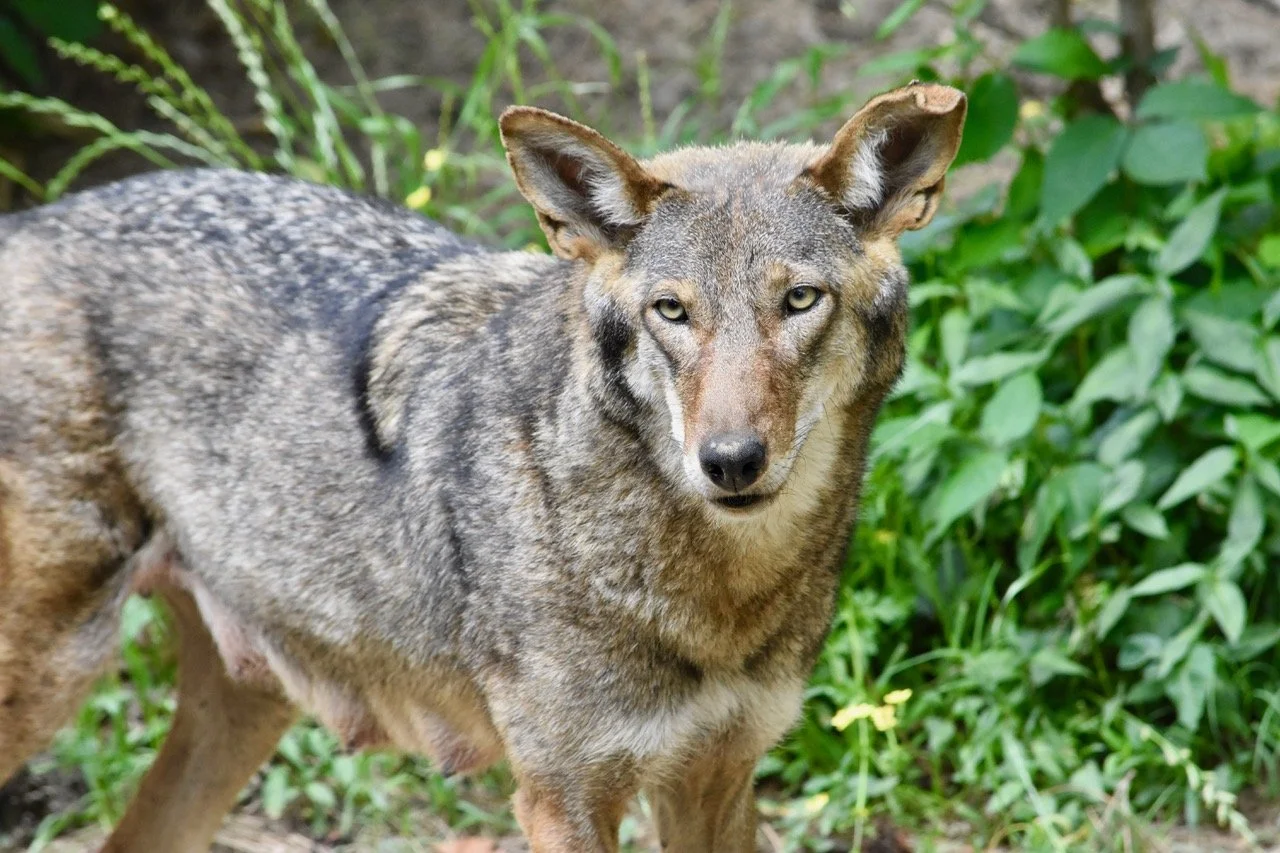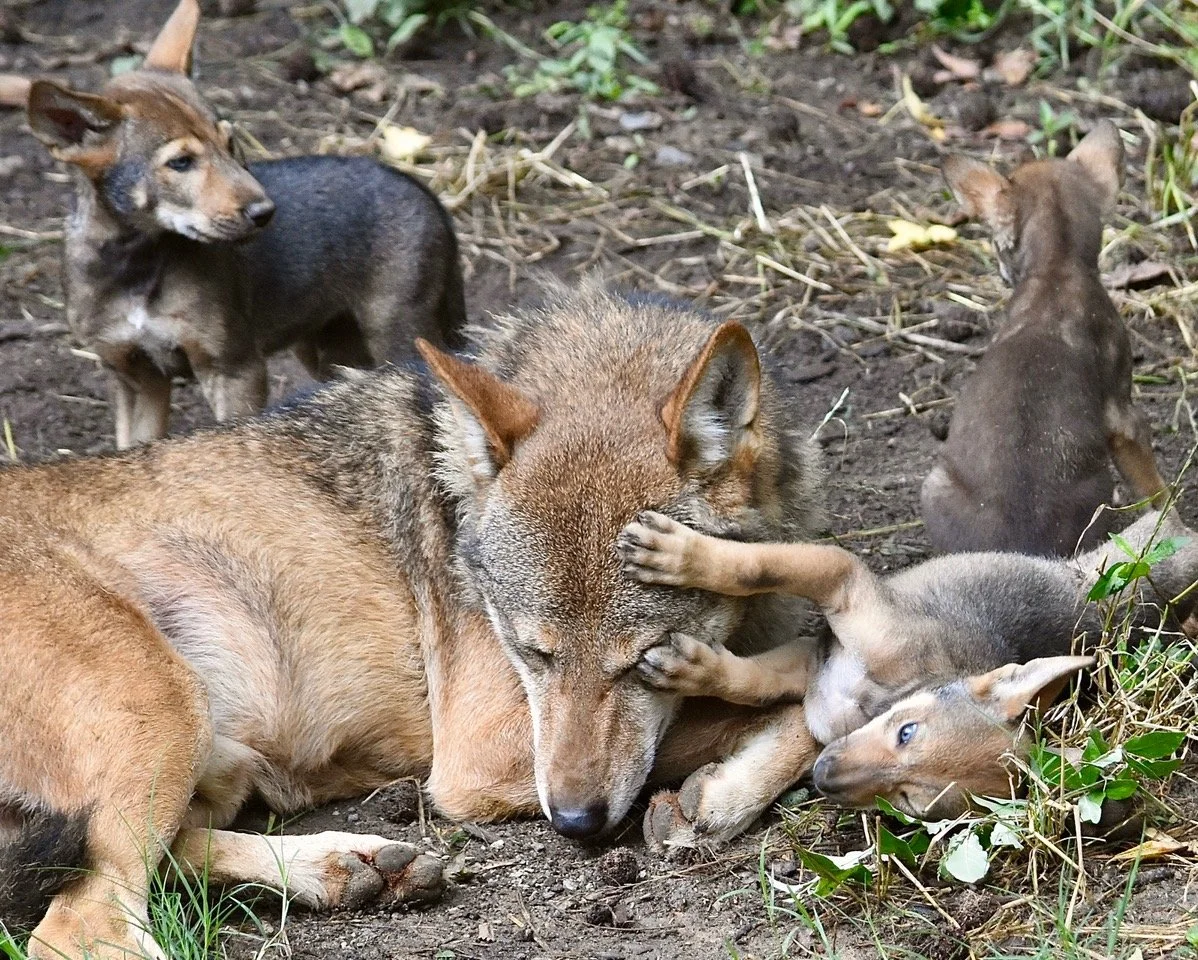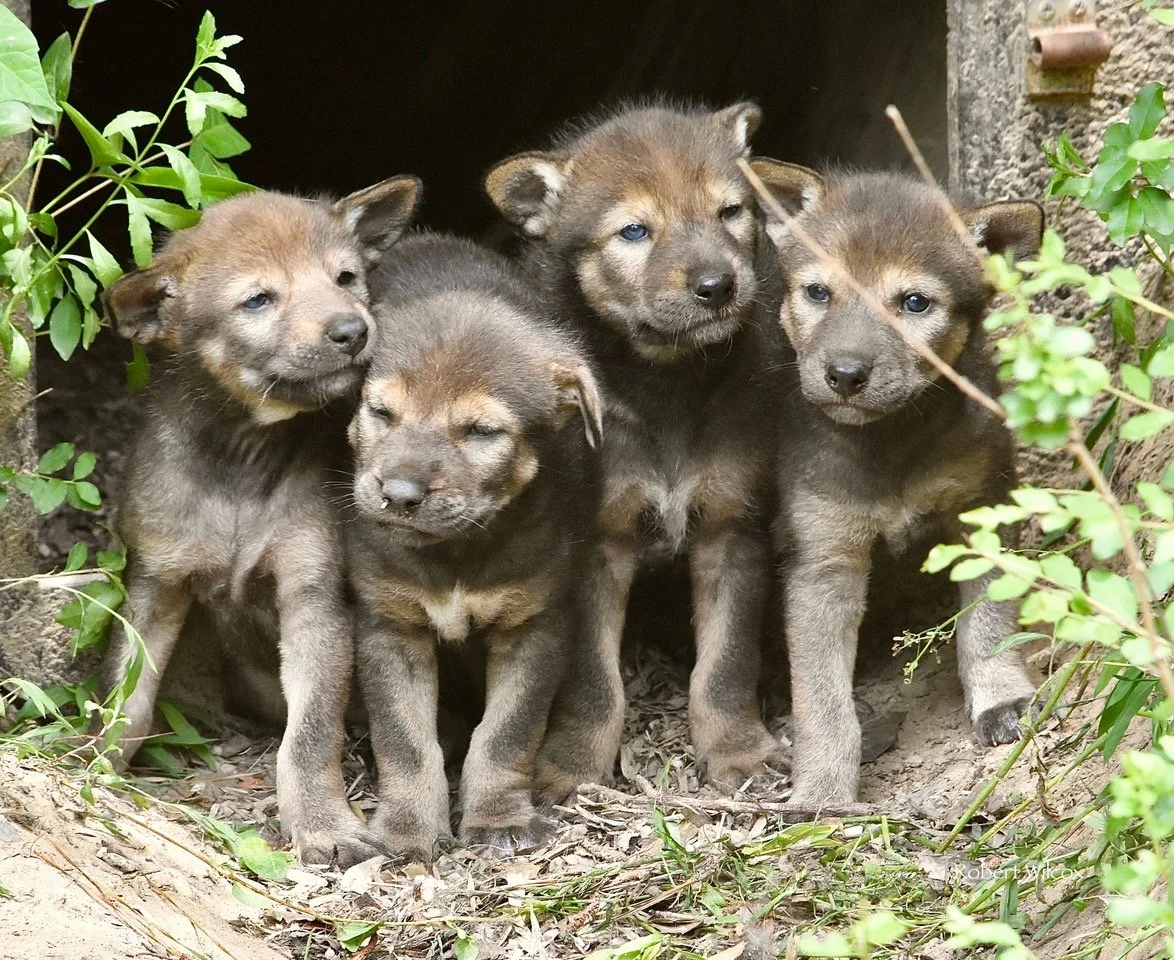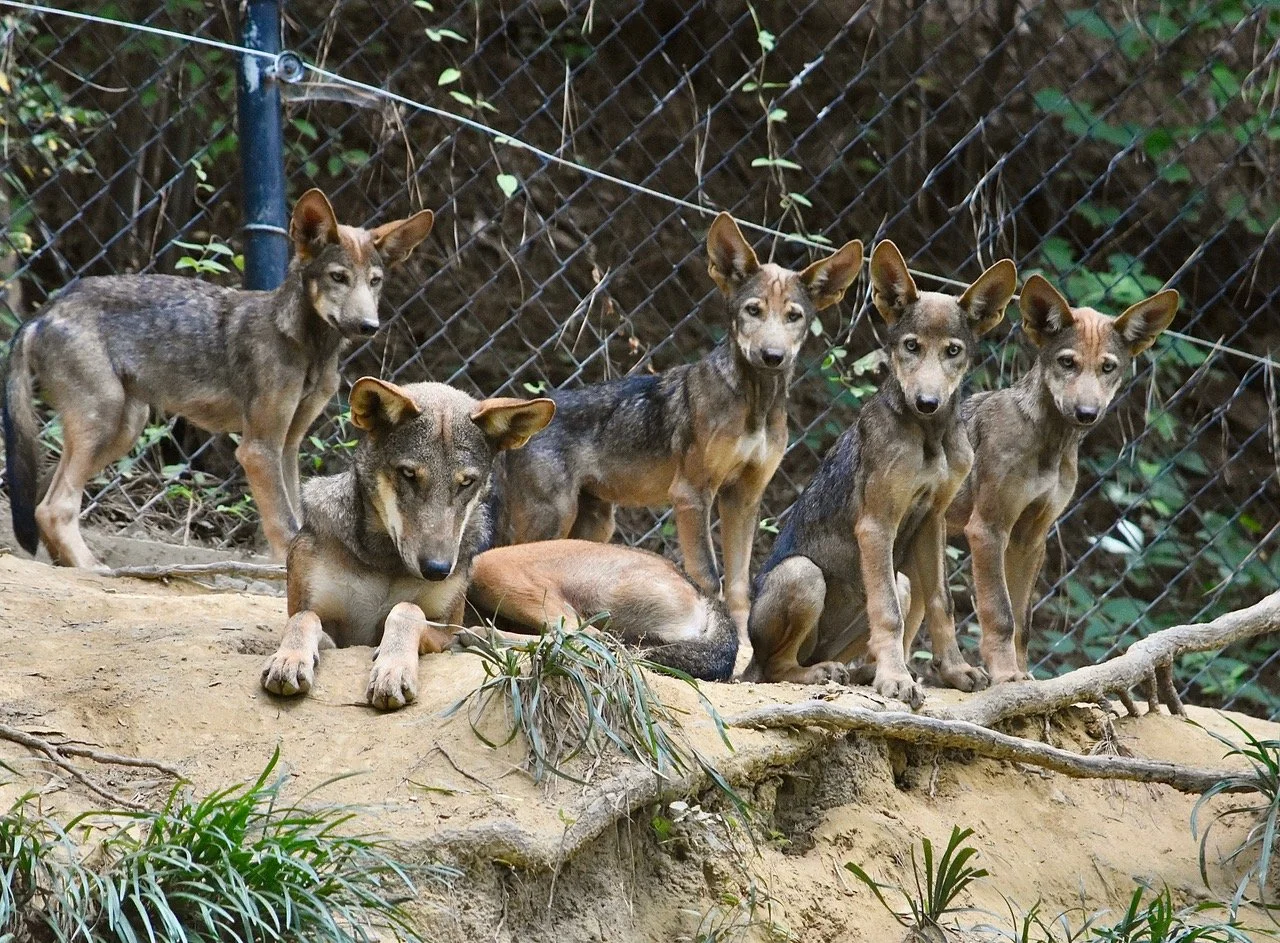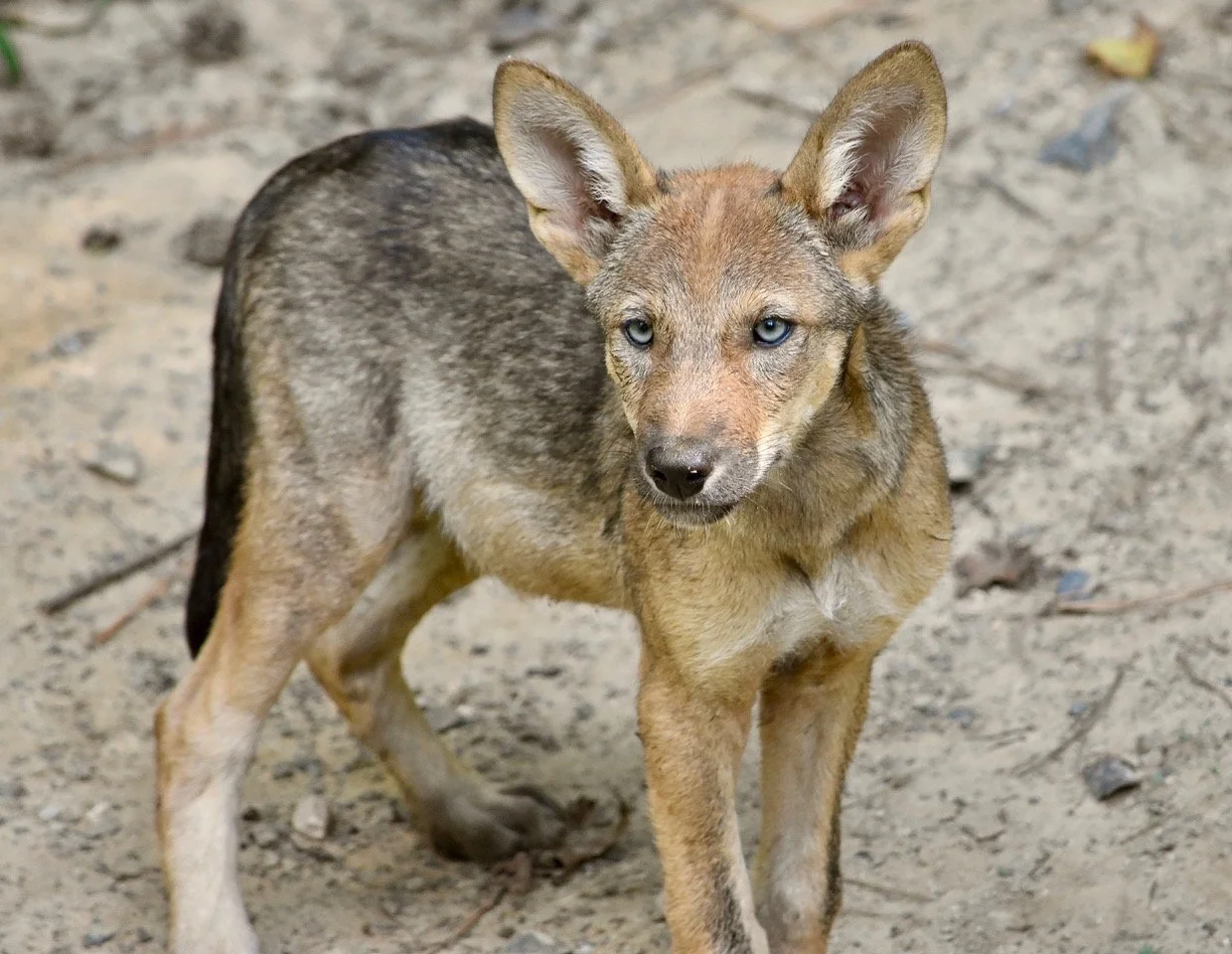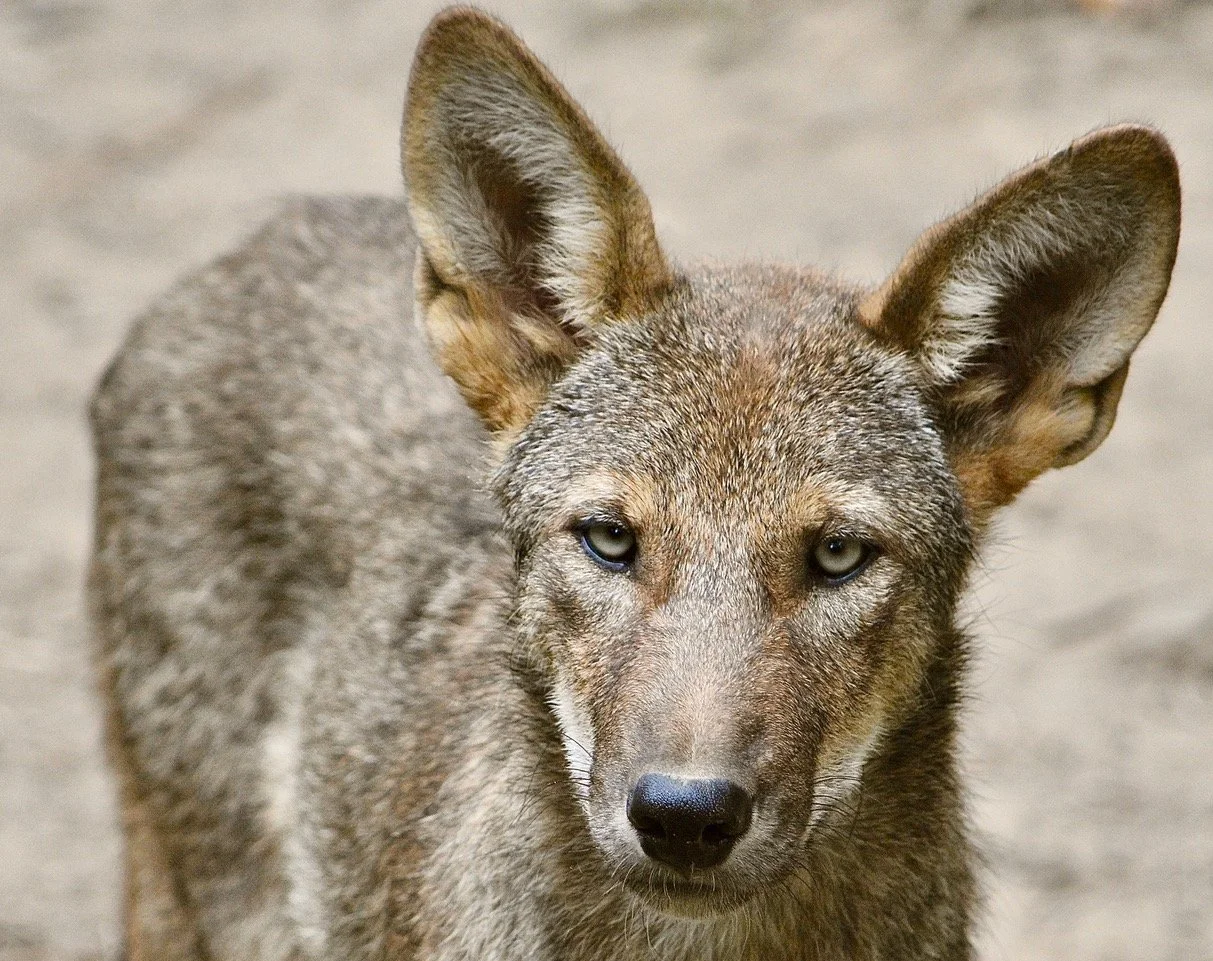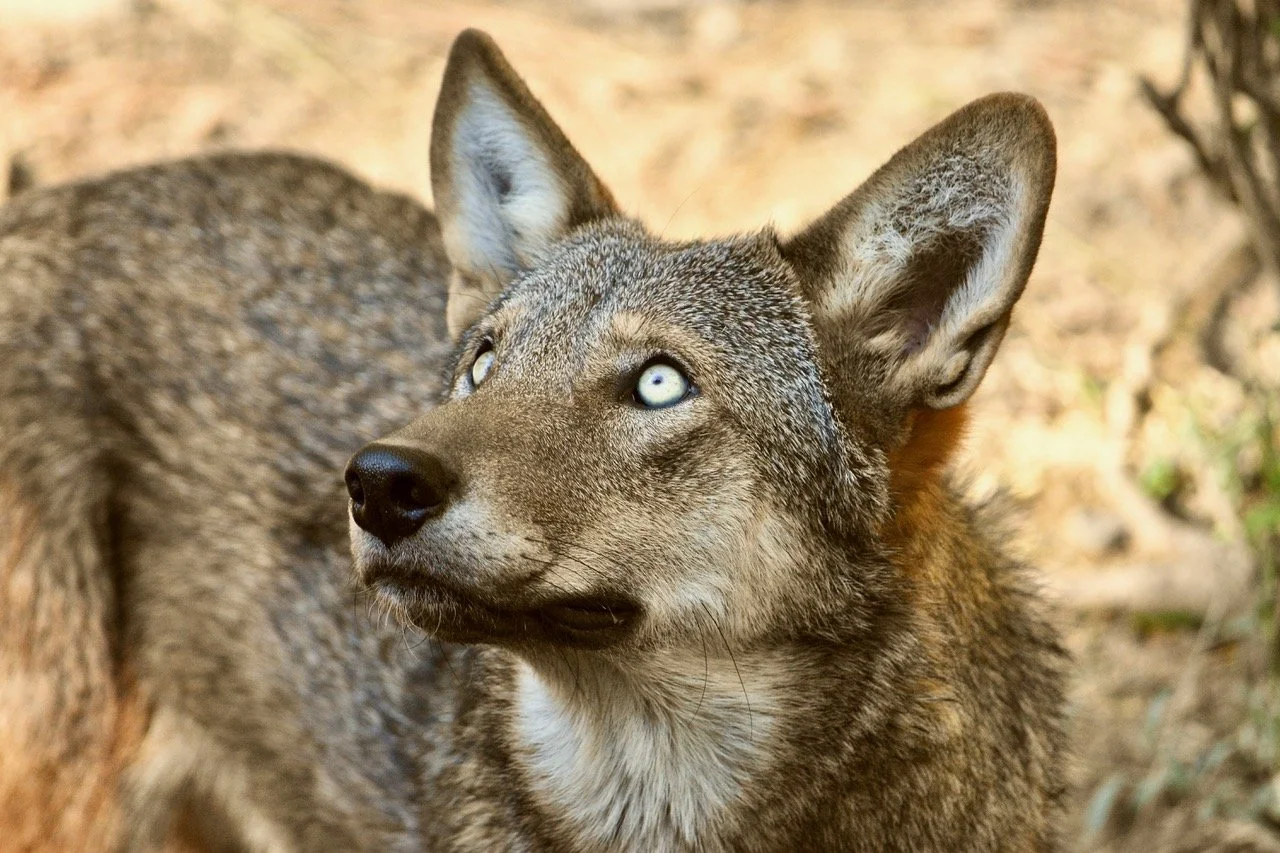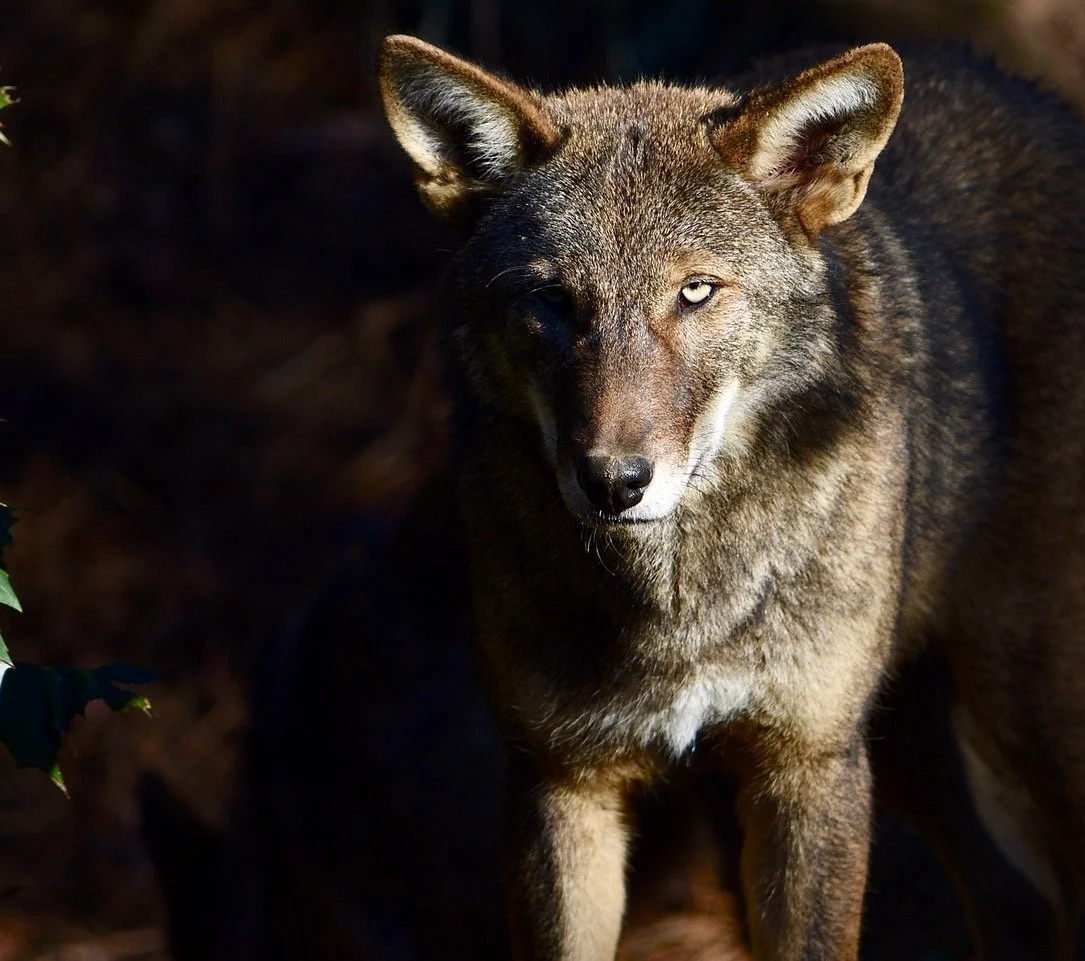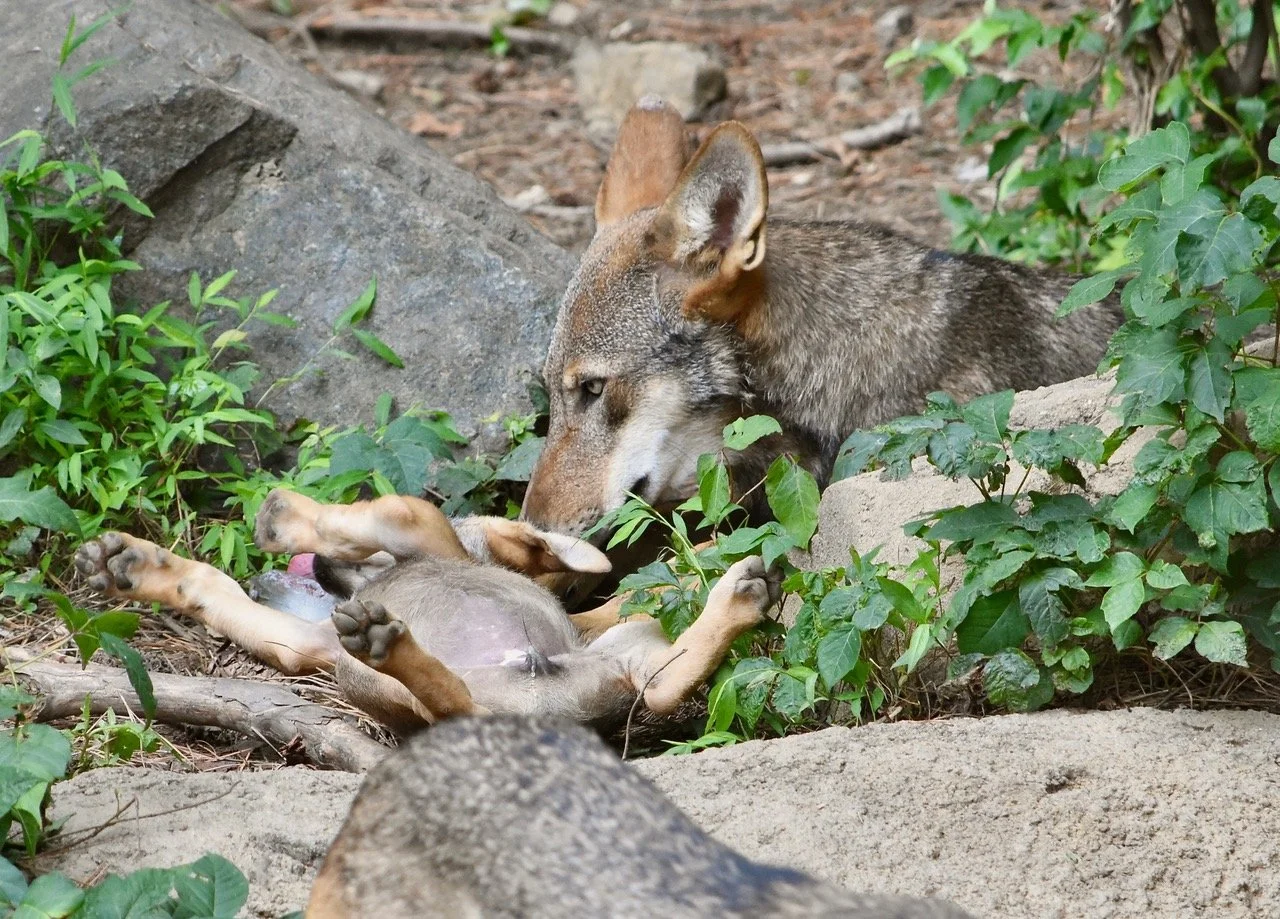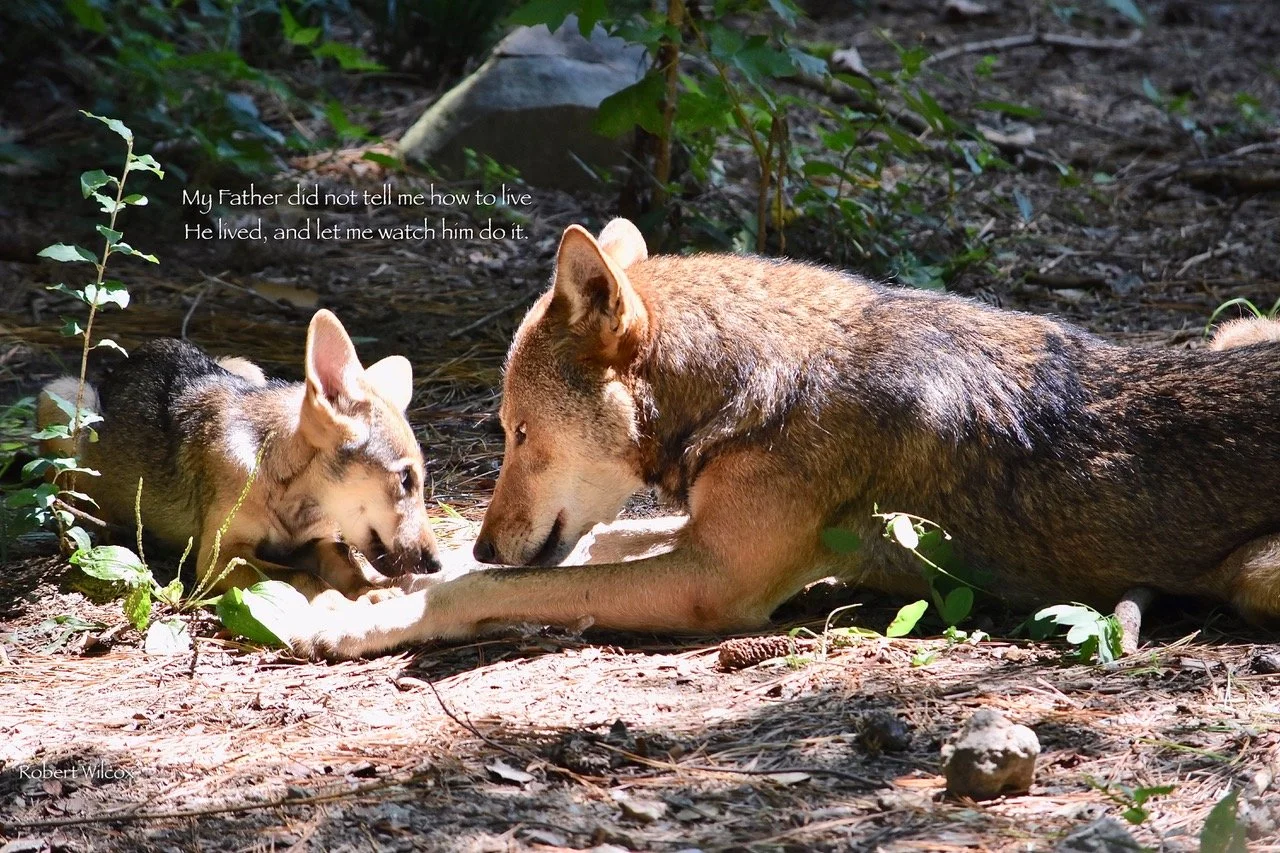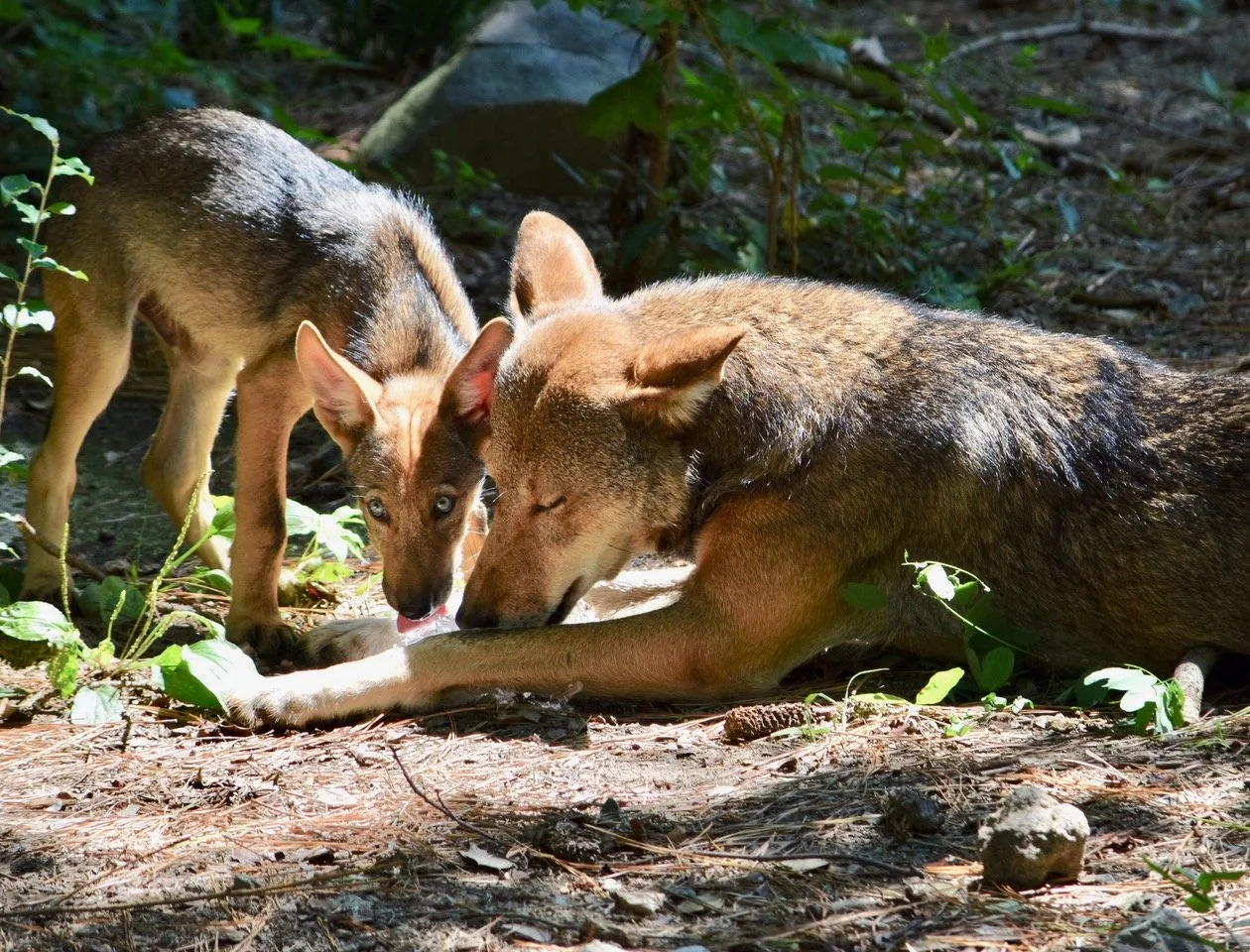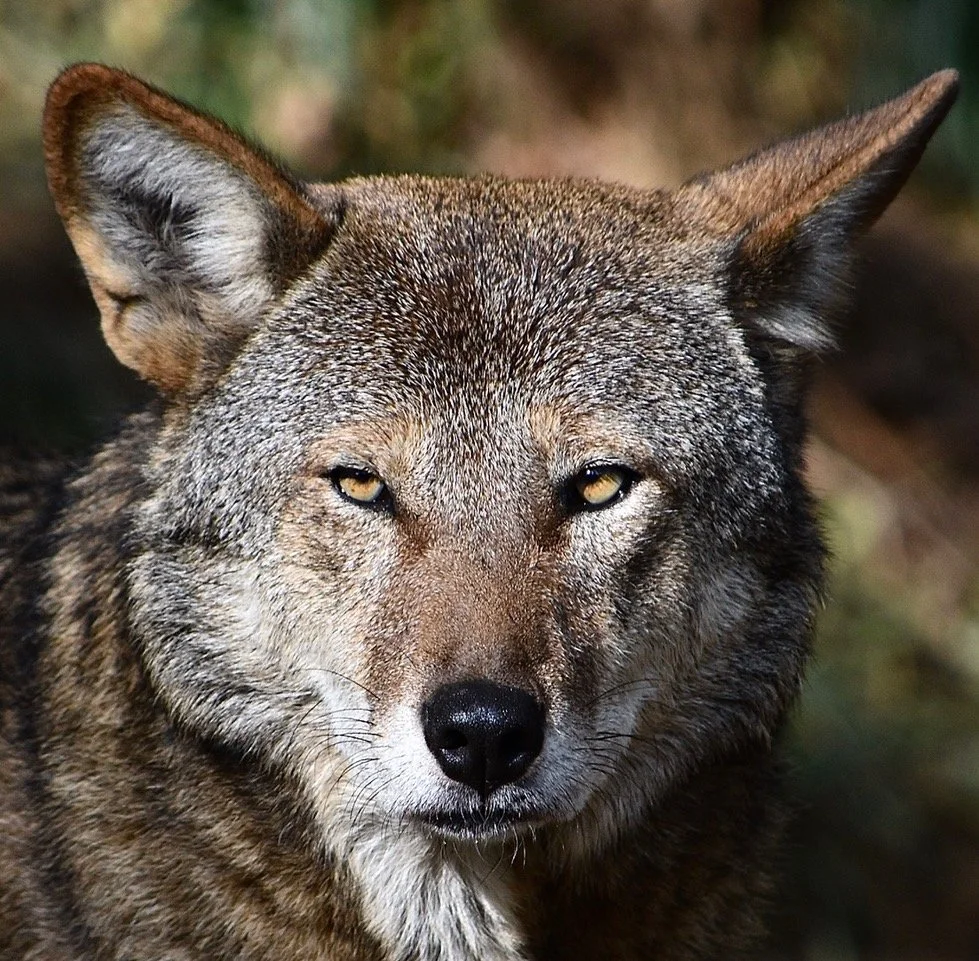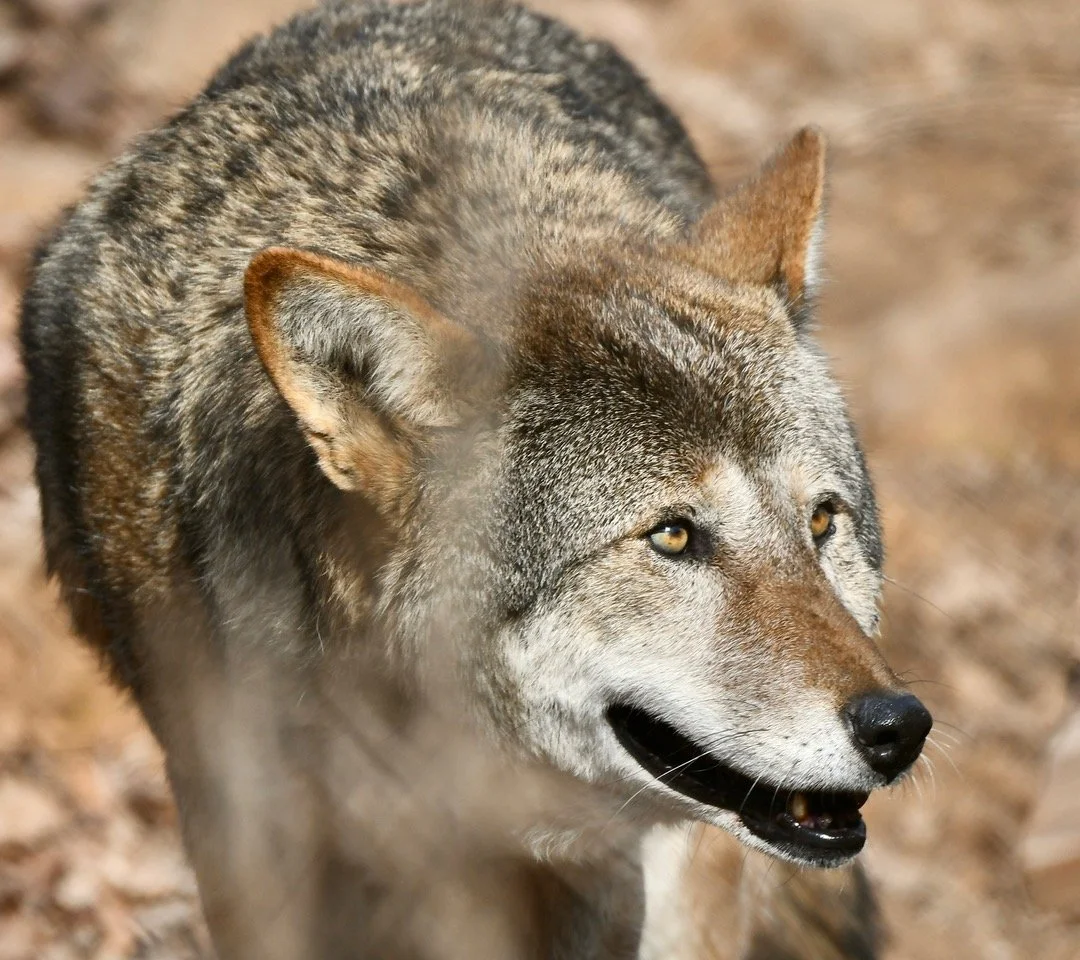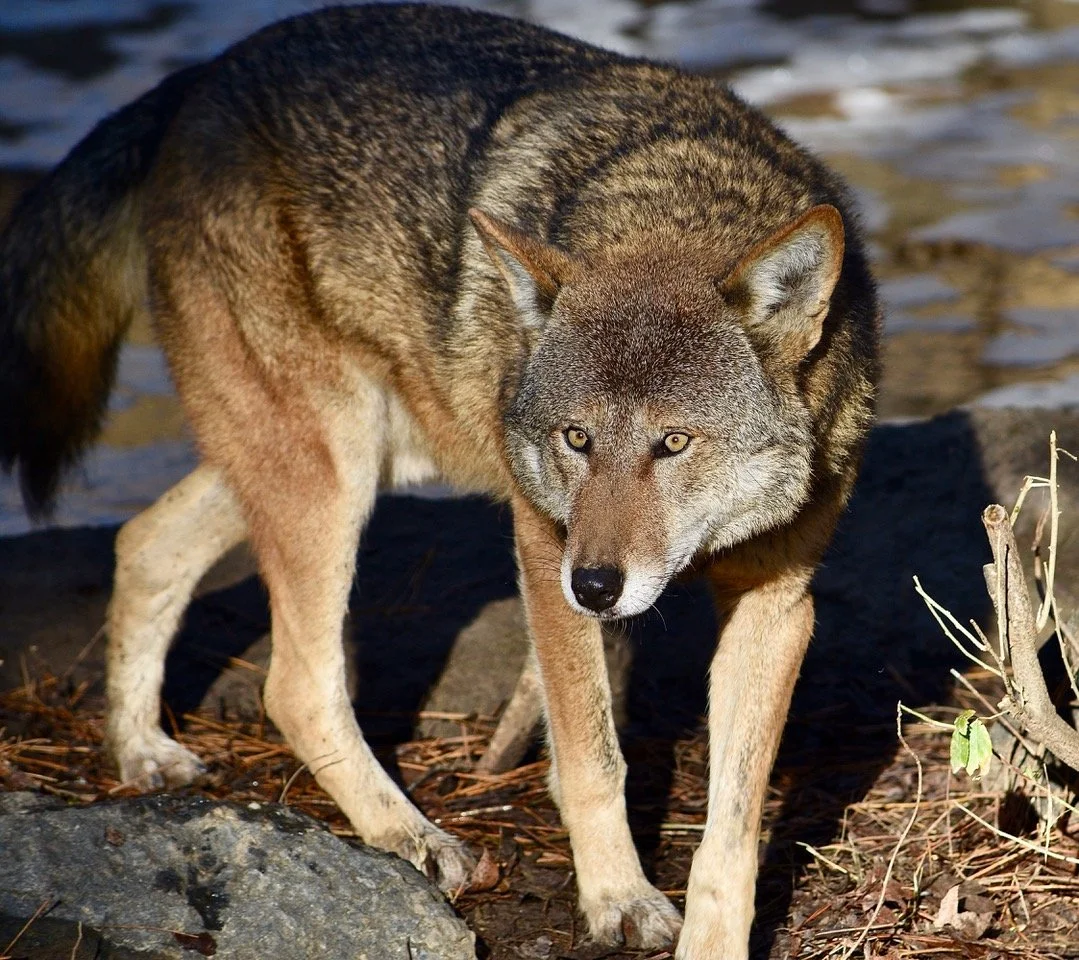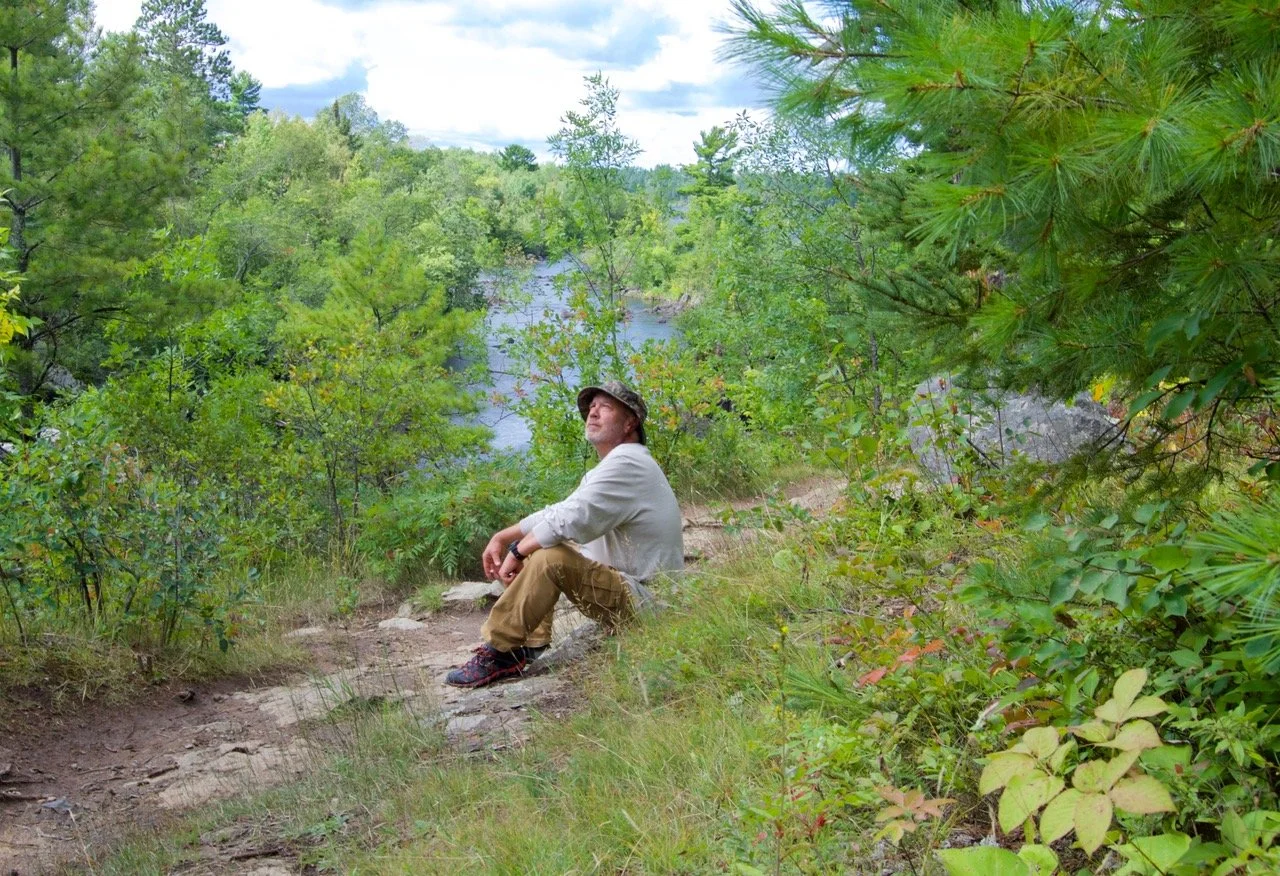Robert Wilcox
1. As a Ranger with the Museum of Life and Science (Durham, NC), can you tell us a little bit about the red wolf conservation work that is being done there?
The Museum of Life and Science has been a participant in the red wolf recovery program since the early 90’s. When the red wolf enclosure was initially built, it was designed to be a public venue that would include breeding pairs. There are about 50 institutions that participate in the red wolf SAFE program, but the vast majority of breeding occurs away from the public. This is an effort to keep them from acclimating to human presence and retaining the potential for wild release. It really helps to educate the public about this species when there is a family for them to see, and MLS has educated untold thousands of people about red wolves. After all, they are Americas forgotten wolves, and awareness is the crucial first step towards conservation. We have been a staunch supporter of red wolf recovery for a long time.
2. How does the museum contribute to the mission of the SAFE?
Saving Animals From Extinction focuses the collective expertise within AZA accredited zoos and aquariums to leverage their massive audiences to save species. These are comprehensive efforts that work across all disciplines to help a species survive. Within the red wolf program, there are many studies that have been conducted over the years that we have participated in. One example last year was a study of the changing hormonal profile of female red wolves leading up to breeding season. This involved collecting daily fecal samples, which were then frozen and sent to the investigators. Another study released a few years ago we participated in showed the harmful effects of kibble based diets for captive red wolves, with inflammatory digestive issues being prevalent. Our red wolves at MLS are fed a whole game diet, which is the diet wolves co-evolved with. I have been advocating for all red wolf facilities to move to whole game diet as kibble is still the primary food at too many facilities. And of course, anytime we have puppies they are candidates for cross fostering into a wild litter.
3. In what ways does the SAFE program facilitate collaboration among conservationists nationwide to protect the red wolf species?
There are really two main avenues that the SAFE program administers that highlight collaboration. The first is the breeding program. Breeding efforts for the red wolf are coordinated at the national level every year in the summer when reps from the breeding facilities come together. They account for all births and deaths, as well as determine space capacities. They then set about matching up potential breeding pairs for the next breeding season, being careful to make proper genetic pairings. Since the red wolf breeding program started with only 14 animals representing 8 genetic lines, we have to be very careful who mates with who. A master “stud book” is maintained of all captive and wild red wolves, so ancestry is known. This then sets up the red wolves to be moved in the fall to set up new breeding pairs. Historically, about 40% of breeding recommendations result in pups. This year I think we have a little over 30 breeding pairs set up so we should get 12 or 13 litters in the captive program this year. The second primary way they facilitate cooperation is through the aforementioned studies in biology. And all of this is in coordination with USFWS.
4. Please tell us about your red wolf photography! How have your images been utilized to support conservation initiatives for this species?
Well the whole effort with the red wolf has just evolved over the past number of years, I think primarily because the story of the red wolf is so compelling. I first started posting on Facebook back in 2018, when there was very little content on the red wolf. At that time there were no wild litters, and the captive program was largely full, so there were just very few red wolf pups anywhere. It was my first time going onto social media, and from the beginning I wanted to make sure it was only about the red wolf. I was lucky in that being able to retire early gave me the time and ability to work on red wolf conservation without having to monetize anything. I think that is a great freedom that allows me to only answer one question…Will this help the red wolf? I give all my photography away, wanting it to go as far as possible. From the beginning, I took the mindset of building a red wolf brand, and filling that brand with serial stories of the development of a multi generational family of red wolves. The story itself is so compelling I learned that a good photo with some context of behavior is a powerful combination when it comes to wolves. As time went on the audience grew, and so did the opportunities to “spread the word”. I was published in International Wolf magazine, and asked to contribute photos for their traveling exhibit on wolves. My photos have been on billboards, used by various NGO’s in their pursuit of red wolf conservation, including Red Wolf Coalition, Defenders of Wildlife, and Champions for Wildlife. I have been published in a children’s book, I have given numerous artists photos for them to use as templates, and was recently published online by National Geographic Kids. In short, I will support with free photography any effort that helps the red wolf. True conservation begins with awareness.
5. With your extensive experience observing Oak and Adeyha, what aspects of red wolf behavior and personalities do you believe are important for the public to understand?
If there is one thing that differentiates me from most who are involved in red wolf conservation it is the amount of direct observation of red wolf behavior that I have. Dave Mech (noted emeritus wolf researcher), has stated that captive wolf behavior is a good proxy for wild behavior, and I have thousands of hours of observation time logged of these amazing animals. The intimacy with which one can participate (as an observer) is truly one of the great joys I have. In terms of specific behaviors, I think the thing that most amazes me is the way wolves pass learned information down to successive generations. While wolves have a set of innate behaviors hard wired into them, they also accumulate wisdom of their environment along the way. Due to the fact that wolf families can stay together through multiple generations, it allows them to pass on this learned behavior. I refer to it as the generational transfer of accumulated evolutionary intelligence, and you have to play the long game over multiple generations to observe it. Luckily at MLS we had that occur in 2018-19. The photos below show this happening. It all started during the first hot stretch of summer in 2018. Our two young brothers were about 2 months old. The keepers came in and after they had done their work, they dropped a big tub of ice cubes on the ground. Moose, our breeding male, immediately knew the benefit! He had learned at other facilities why ice is a good thing on a hot day. The two boys, however, wanted nothing to do with it, having never seen it before. Ellerbe just took off and got as far away as he could, but Eno’s curiosity made him hang out about 20 feet away watching Moose lay down on top of the ice. Eno paced back and forth nervously, having never encountered ice, he was very wary, as wolves tend to be neophobic. After watching Moose for awhile, his curiosity finally started taking over and he nervously approached. Moving very cautiously, he made his final approach and sat down with Moose on the ice, learning how awesome ice was. From that point forward, Eno also became a fan of ice, like his father. So fast forward to 2019, when we had 6 more pups in a new generation. The first hot snap of summer also had our keepers bringing ice to wolves, this time in the form of mousecicles, frozen mouse pups in a water. The new pups, once again, wanted nothing to do with it, but Eno knew. He brought one the treats to his sibling, and taught him what he had learned the previous year….passing along through the generations wisdom learned along the way. Very few animals invest in successive generations like wolves do, so this a very uniquely wolf attribute. Think of it as passing along life hacks. It is amazing to observe, and the photos below show these moments happening.
6. In remembrance of Moose, a wolf you held close to your heart, could you discuss some of the ways he positively impacted conservation endeavors?
The contributions Moose gave to his species are hard to overstate. He was born at the Wolf Conservation Center, which does a great job on social media. He quickly became a star, and eventually produced 2 litters with his mate, Salty. It was not that long after their second liter that Salty died unexpectedly, leaving Moose as a single father. He didn’t skip a beat, and raised those pups himself. The legend was born. When he was up for moving in 2017, many institutions wanted him, but we were lucky to get him at MLS. There he and his new mate Cary produced 2 litters totaling 8 pups. In 2019, when the wild population of red wolves has dropped to 7 and no wild litters were being born, Moose and Cary produced a litter of 6, inspiring hope across red wolf nation. Images of Moose have literally travelled the entire world, and he has fans in more countries than I can remember. I have heard over the years from every corner of this planet. One of the biggest challenges for red wolves is just awareness. So many people still don’t know about the red wolf. Moose was able to penetrate the American zeitgeist, and for that alone he is legendary. He made the red wolf relatable, and being able to tell his story in serial form went a long way in dispelling a lot of the “big, bad wolf” sentiment that some have. He sired 18 pups over 4 litters, and passed just short of his 14th birthday. He will be deeply missed by many, but never forgotten.
7. How hopeful are you about the potential for complete recovery of the red wolf species?
This is a very complex question. In terms of the traditional definition of a recovered species, I don’t know that the red wolf will ever be “fully recovered” with the way things stand now. One thing that I think helps with perspective is to compare two similar programs, with similar goals, started at about the same time. This would be the red wolf compared to the Mexican grey wolf. Both these programs started in the mid 80’s, both started with an extremely small number of animals (I think the Mexican grays started with 8 animals, and the red wolf program started with 14). Fast forward 3+ decades and the Mexican grey wolf wild population sits at about 250 animals, and the red wolf has less than 30. That is a pretty stark comparison. Why the difference? While species recovery is very complex, I would argue the biggest difference is space. The red wolf, as its historical range is currently defined, has no space. We have been looking for a secondary reintroduction site for 25 years. If we haven’t found it by now, we are not going to. Even in their 1.9 million acre official recovery zone, they are hemmed in on all sides, and vehicular death remains a constant threat. While I believe that we can have a functioning wild population in eastern N. Carolina, it will take constant maintenance. There is, however, some reason for optimism long term. There is some very exciting work being done in genetics, and I am hopeful that with the advent of high resolution, whole genome aDNA sequencing, we will be compelled to re-examine how we define the historical range of the red wolf. Researchers are currently in the process of analyzing the genomes of approximately 100 ancient and historical American Canis samples to clarify the pre-20th century evolutionary history of coyotes, gray wolves, red wolves, and eastern wolves. This work should come out (mDNA and nDNA sequencing) in 6-12 months.
8. At what point in your life did you discover red wolves, and what sparked your interest in participating in their conservation efforts?
I actually first learned of the red wolf in the late 80’s, while living in the Houston area. I could not believe there was a wolf species I had never heard of. That’s when I first heard them referred to as Americas forgotten wolf, and I was hooked. It was hard to follow them back then, and I used to go to the university libraries once in a while to look up new research. There was starting to be a fair amount of research that started coming out on the reintroduction effort, especially in the 2000’s. I was fortunate to be able to retire in my early fifties, at which time I wanted to get more directly involved. I had no idea where to start, but I was committed.
9. What guidance would you offer to young people interested in pursuing wildlife conservation, particularly in the context of red wolf preservation?
I get asked this a lot, and I always answer the same way. You have to follow your passion, wherever that may lead. I certainly had no idea how I was going to get involved, but I had passion in abundance. In wildlife conservation, getting involved in volunteer efforts is a great way to meet people who are of like mind. Developing relationships with anyone involved in your passion will lead to unknown opportunities. It’s a somewhat small world in red wolf conservation and the more people you can meet the better. And always let them know you are willing to help in any way. If you are a student, seek out the curricula that would support wildlife conservation, such as Wildlife Ecology, Biology, or even Legal. Again, there are many pathways to work the red wolf issue but if you follow your passion, your path will reveal itself.
Ranger Robert Wilcox with the Museum of Life and Science in Durham. Robert passionately advocates for Red Wolves through his work with the museum, his photography, and through his passion for telling their story through his intimate observations of the species within the SAFE program!

